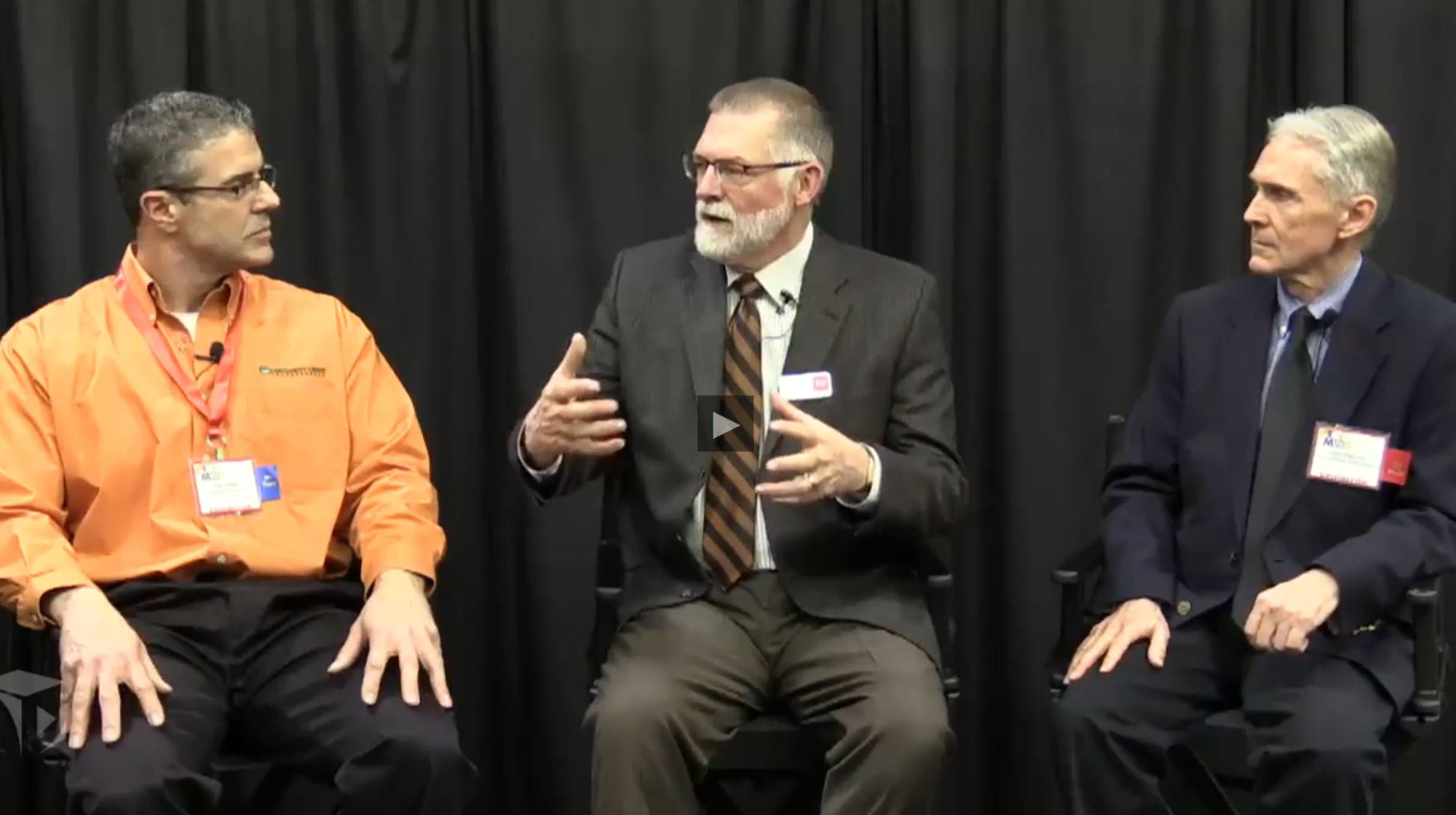Two of TSP’s own were part of a first for Minnesota’s longest-running educational summit: They livestreamed an interview from the floor of the Minneapolis Convention Center. Principal Ron Halgerson and Associate Bert Haglund, both senior architects, took part in the special event during the 96th Annual MSBA Leadership Conference, held Jan. 12-13. The segment from Flyer Media Productions—a component of Little Falls Community Schools—highlighted how TSP has built solid working relationships with the district and its construction mangers from Contegrity Group.
Watch the video segment here.
Little Falls Superintendent Steve Jones moderated the 30-minute conversation. Jones introduced Halgerson and Haglund as “the dynamic duo.” Together with Contegrity’s Pete Fillippi, Halgerson and Haglund detailed how team members collaborated to secure public support for nearly $25 million in additions, renovations, and improvements at five schools across two communities. Construction will start almost as soon as the final bell rings to release students for summer vacation.
The goal of it all, Haglund said, is to make smart changes that “translate into better education, better facilities” to “serve the educational mission.”
While the live interview centered on the Little Falls story, some of the opportunities (and nearly all the constraints) are universal among K-12 education building projects. Each state has its own funding mechanisms, and districts are challenged to stretch dwindling resources. When community members attend school events and see a well-kept, clean building, it becomes an even greater challenge to communicate the hidden needs: outdated HVAC and plumbing systems, leaky roofs, inefficient drop-off or parking patterns, inadequate security and fire-protection systems, and restrooms or other building features that aren’t up to modern accessibility standards.
“The timing for this referendum, frankly, was critical,” Halgerson said of Little Falls’ project work. “You get to a point in a building’s age and level of deterioration, and you really have to catch it. It compounds itself. … The basic principle we conveyed in numerous meetings is, ‘You’ve got five schools, two communities, and we have to protect the district’s assets.’ ”

